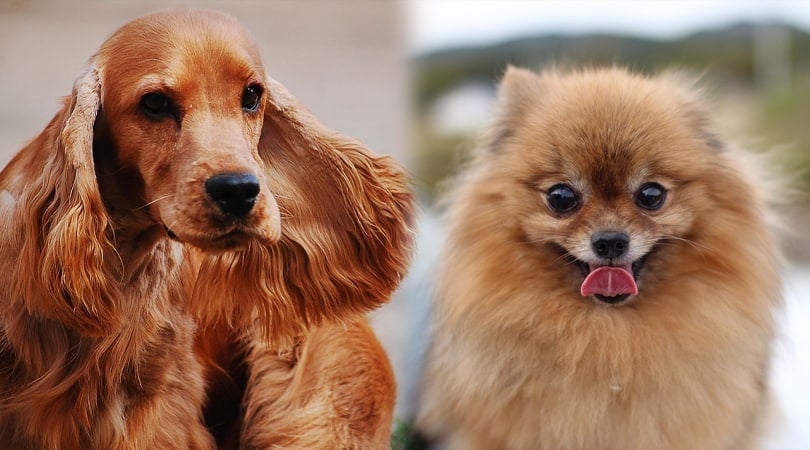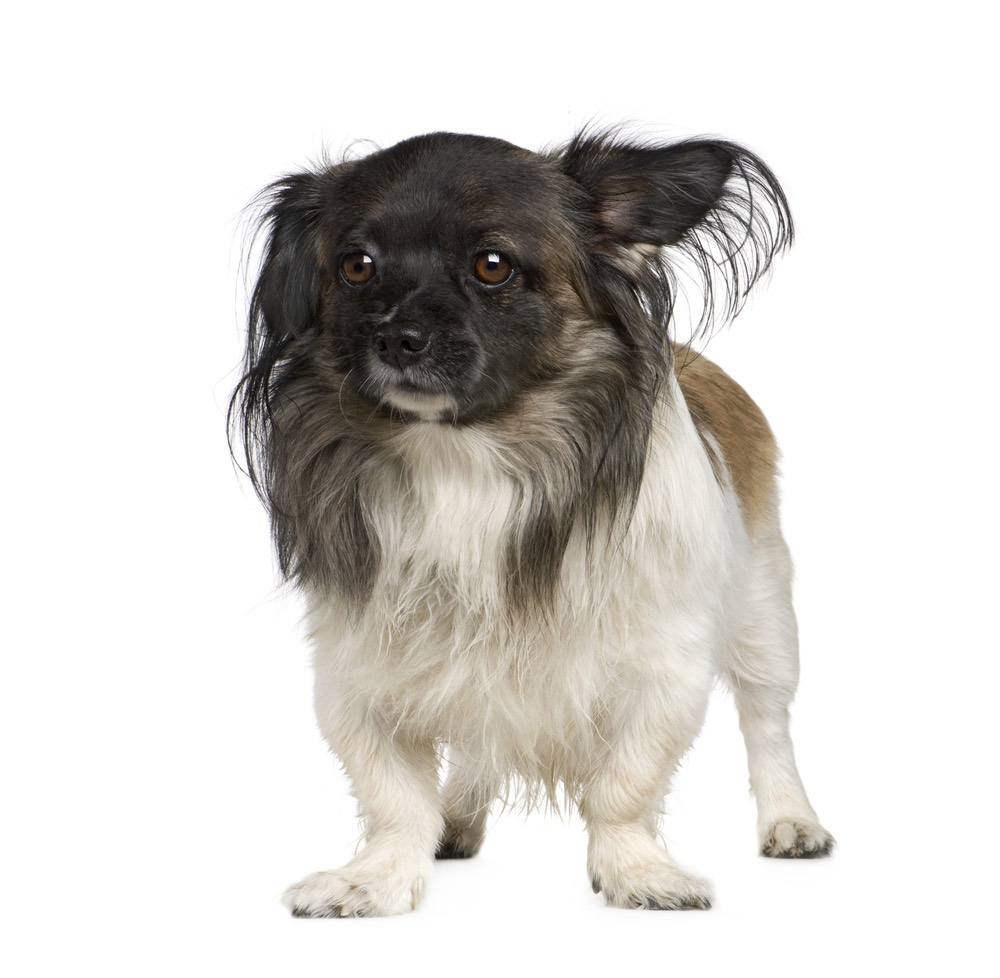Black and White French Bulldog: Facts, Origin & History (With Pictures)
By Kit Copson
Updated on
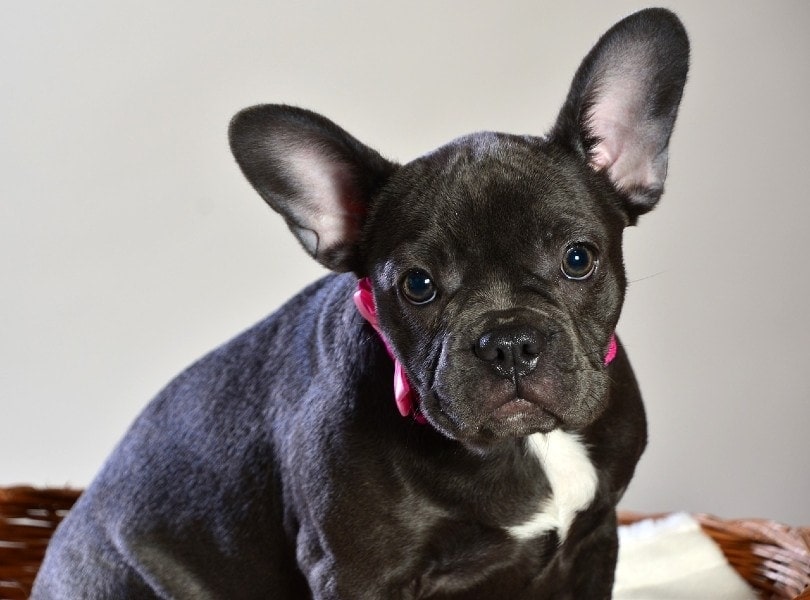
French Bulldogs—affectionately known as “Frenchies”—are some of the world’s most popular dogs thanks to their loving and “facile à vivre” (easygoing) personalities. You’re always spoiled for choice when it comes to French Bulldogs, too, because they come in such a wide variety of colors and coat patterns.
If yours is black and white, you may have what’s known as a “pied” or “piebald” French Bulldog on your hands. This is just one possibility, though, as the coat pattern and color possibilities are extensive. Frenchies with the Brindle coat pattern also sometimes have white patches along with black stripes. French Bulldogs with the Merle pattern can also have black patches and spots on top of a white base.
The Earliest Records of Black and White French Bulldogs in History
All French Bulldogs—coat colors aside— are the descendants of 19th-century English bulldogs formerly used in blood sports like bull baiting. Some breeders at the time developed a smaller, or “toy”, Bulldog breed which was welcomed at dog shows alongside their larger counterparts as early as 1830 according to the American Kennel Club. This toy breed weighed under 12 pounds.
Though there’s no set year or date that tells when this toy breed first came about, we can safely assume from the American Kennel Club’s information that the Frenchie dates back to sometime in the early 19th century. Early photographs of French Bulldogs dating back to the 19th and early 20th centuries show the breed in a variety of coat colors and patterns.
Though we couldn’t find any old photos of pied black and white Frenchies, we did see plenty with black and white markings—brindles in particular.
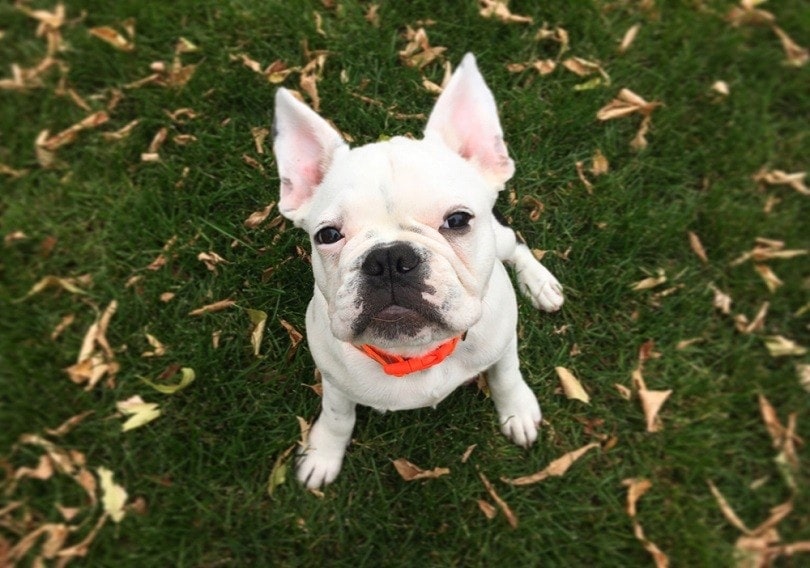
How Black and White French Bulldogs Gained Popularity
Lace workers in Nottingham took a shine to Miniature Bulldogs for unknown reasons, but it seems likely that these sweet-natured, fun-loving dogs provided companionship and comfort to the underpaid workers. When these workers lost their jobs during the Industrial Revolution, they relocated to northern France and took their little dogs along with them.
Unsurprisingly, the French quickly fell in love with the Toy Bulldog, too, and their popularity soon spread to Paris. This resulted in many being exported from England to fulfill the demand for them. They named these dogs “Bouledogue Français”, which translates to ball (boule) and mastiff (dogue).
Frenchies won hearts everywhere in French society, where they were adored by both the underprivileged and the wealthy—particularly wealthy Americans who loved them so much that they began exporting them to the States in 1885. There’s no information available as to which colors of French Bulldogs were the most popular at the time, but it likely came down to personal preference.
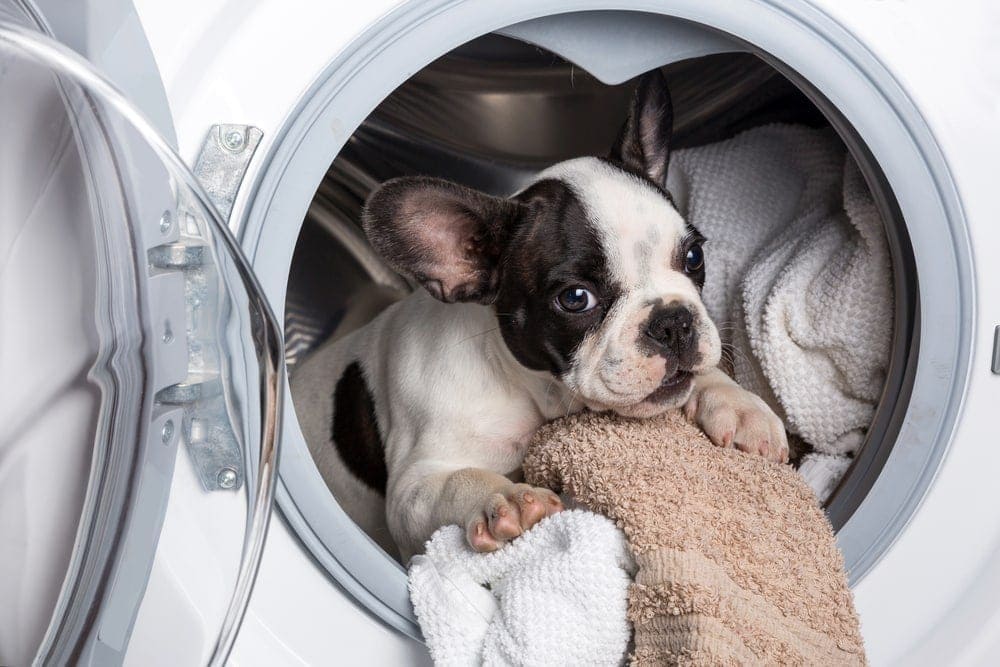
Formal Recognition of Black and White French Bulldogs
French Bulldogs were formally recognized by the American Kennel Club in 1898. The breed’s recognition had been helped along by the support of wealthy French Bulldog enthusiasts, including the Rockefellers and J.P. Morgans who owned Frenchies themselves.
When the French Bulldog arrived back in England in 1893, breeders showed little interest due to the Frenchie not fitting the English Bulldog standard. They were first recognized as a Bulldog breed type rather than as an individual breed. However, some fought for the breed to be recognized separately from the English Bulldog, and they eventually were by The Kennel Club in 1905.
According to the AKC’s breed standard, accepted French Bulldog colors are:
- Brindle
- Brindle and white
- Fawn
- Fawn and white
- Fawn brindle and white
- White
- White and brindle
- White and fawn
- Cream
Accepted French Bulldog coat patterns are:
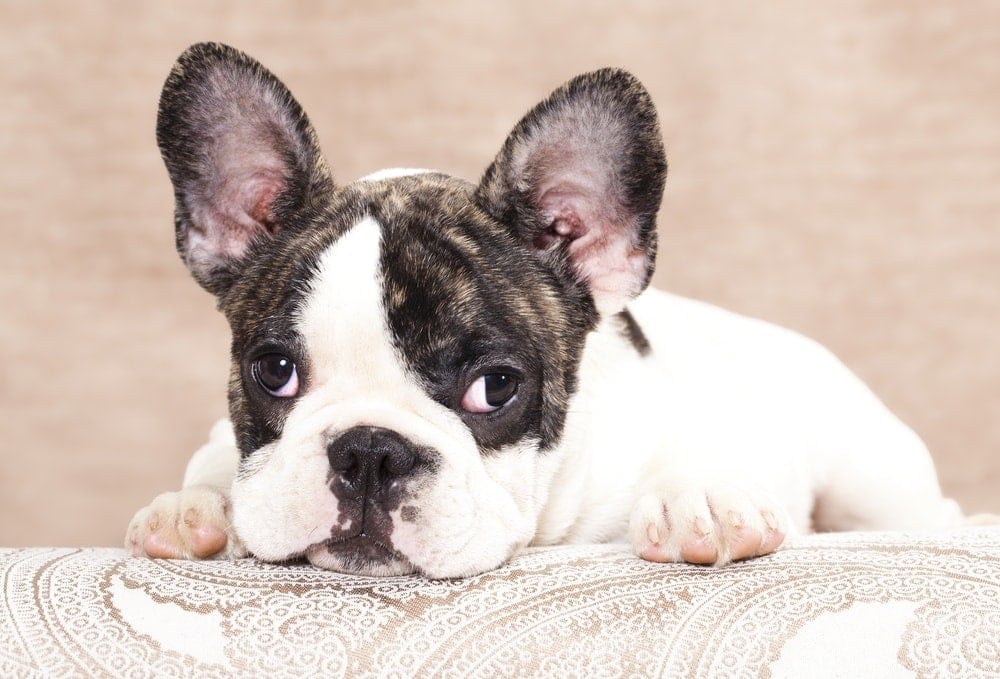
- Pied/piebald
- Brindle markings
- Black mask
- Black markings
- White markings
Top 3 Unique Facts About French Bulldogs
The French Bulldog has a rich history, and there are a lot of interesting facts to learn about these fun-loving, spunky little dogs.
1. French Bulldogs Were Popular With Parisian Streetwalkers
French Bulldogs were once known for hanging out at brothels and being companions to Parisian ladies of the night—the cheeky little so-and-so’s! They even appeared next to these ladies on postcards in the 19th and 20th centuries.
2. French Bulldogs Have Appeared in Art
A French Bulldog named “Bouboule” was the subject of post-impressionist artist Henri Toulouse-Lautrec. Edgar Degas also painted a French Bulldog alongside a horse.
3. French Bulldogs Can’t Swim
If you’re planning on adopting a French Bulldog, be mindful around water when out adventuring because these dogs can’t swim. This is because they’re heavy, big-boned, short-legged, and don’t have a snout.
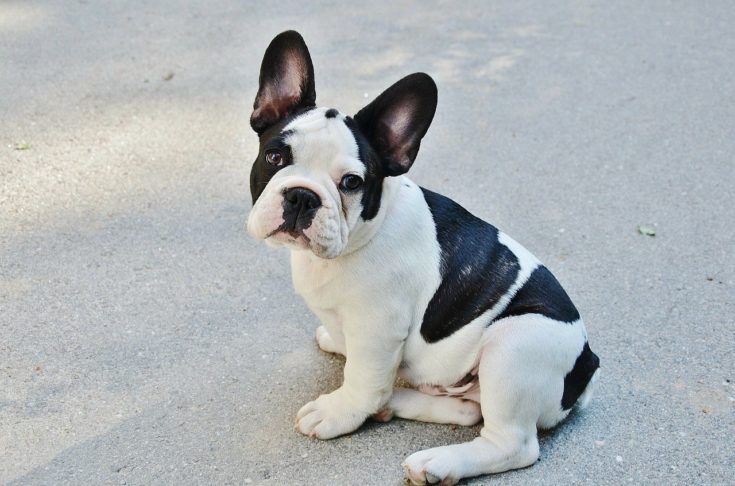
Does a Black and White French Bulldog Make a Good Pet?
Any French Bulldog, regardless of color, can make a fun, loving, and loyal companion to anyone willing to show them plenty of appreciation. Thanks to their compact size, they’re a great choice for people who live in apartments and first-time dog parents. They’re friendly, funny, big-hearted little souls that need and crave human company.
If you’re not home much or travel frequently, you may want to reconsider whether a French Bulldog would be right for you because these dogs are very sensitive to being left alone. If left alone for more than a few hours, they have a tendency to become destructive as a way of releasing stress. For this reason, it’s important to take into account whether you have enough time to dedicate to your Frenchie.
Conclusion
Whichever coat coloring or pattern you prefer in French Bulldogs, one thing’s for sure—they’re pretty amazing little dogs with a long and quirky history. For centuries, they have been beloved by and have provided comfort and companionship to a huge number of people, from those struggling to make ends meet to wealthy business people and socialites.
For this reason, many around the world continue to have a special place in their hearts for French Bulldogs.
See also:
- 100+ Black & White Dog Names: Ideas For Stunning & Unique Dogs
- French Bulldog Grooming — 9 Tips and Tricks
Featured Image Credit: Paska3610, Pixabay



